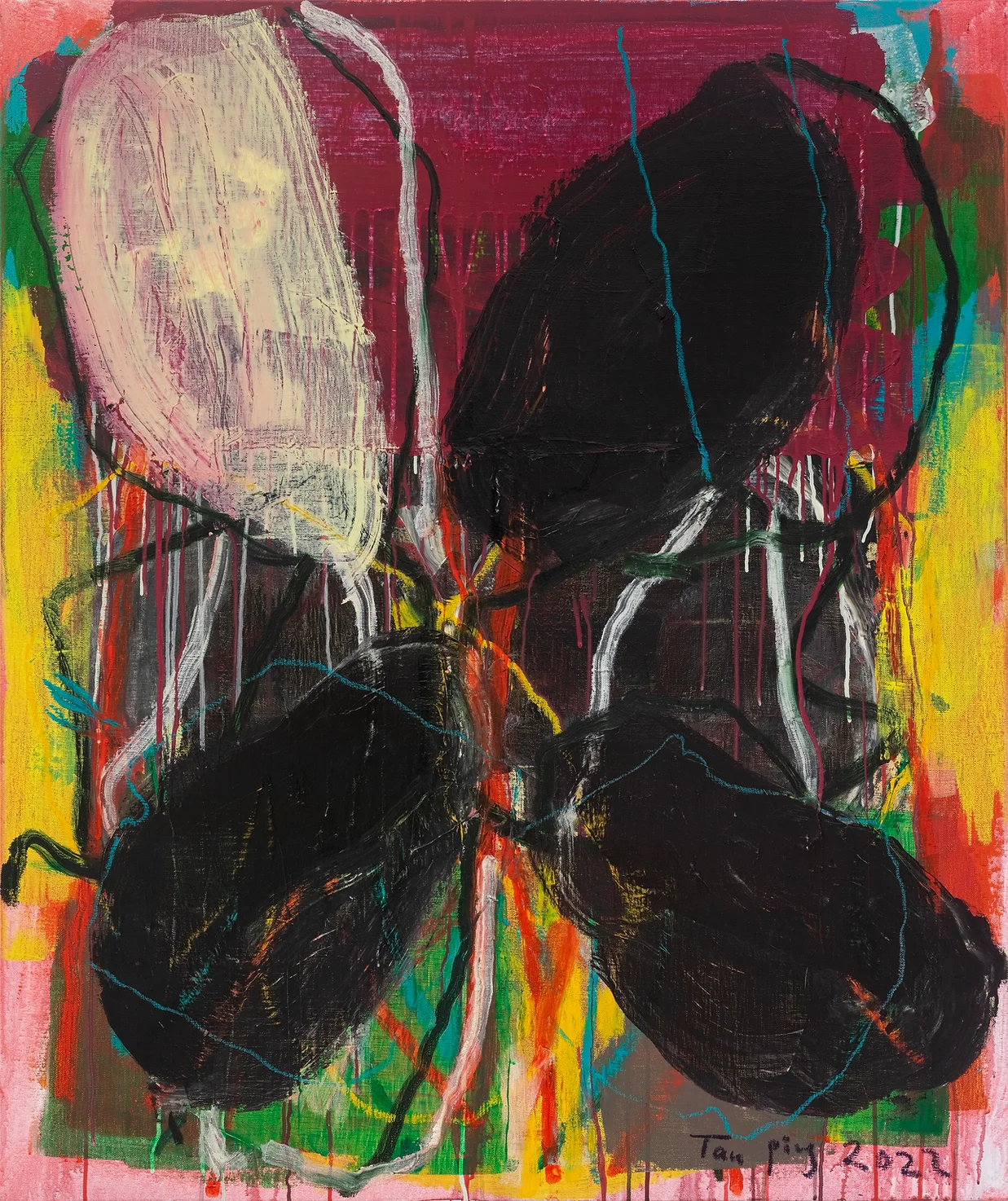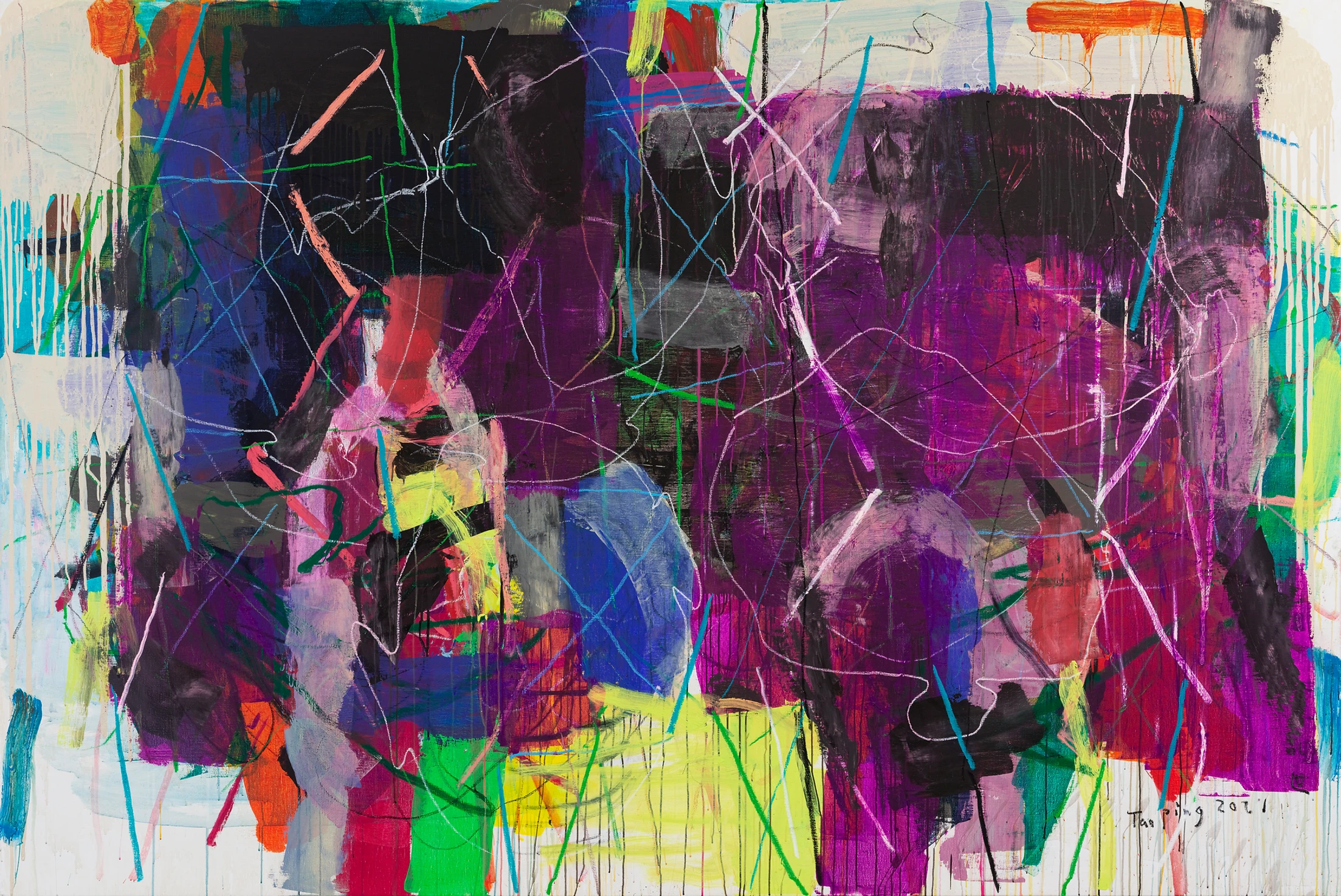
| 기간| | 2023.12.01 - 2024.01.13 |
|---|---|
| 시간| | |
| 장소| | 탕 컨템포러리 아트/서울 |
| 주소| | 서울 강남구 압구정로75길 6 (청담동)/지하 2층 |
| 휴관| | 일, 월, 공휴일 |
| 관람료| | 무료 |
| 전화번호| | 02-3445-8889 |
| 사이트| | 홈페이지 바로가기 |
| 작가| |
Tan Ping
|
정보수정요청



|
|
전시정보




Transcending Boundaries
In 2021, Tan Ping's solo exhibition "What is Painting 1984-2021" was held at the Tang Contemporary Art in Beijing. Continuing the essential yet provocative question, this exhibition also hinted at the theme of the 2022 Hong Kong retrospective, "Boundless." It not only reflects Tan Ping's artistic pursuit but also a profound exploration of transcending limits. During the "What is Painting 1984-2021" exhibition, Tan Ping, in an interview with Li Tianqi, revealed, "I've been painting for forty years, yet the journey remains incomplete."
"Art, to me, is an ongoing process; I approach each moment with a perpetual sense of incompleteness. Throughout this journey, I continually encounter in specific time, space, and domain—moments of meeting, immediate separation following a fresh beginning. It's akin to the end and start of a new life,, death and birth, sorrow and joy, disappointment and hope, the past and the future. In the fleeting moments of aggregation and separation, eternity is realized. This is the essence of art; this is the spirit of painting."1
Compared to searching for answers, questioning touches more on the characteristics and possibilities of art. This inherent openness in Tan Ping's artistic approach is evident in the collaborative exhibition "HOU YING & TAN PING," held at Xiamen's Topred Center for Contemporary Art (TCCA) in February 2023. Pioneering Chinese postmodern dance, Hou Ying, and the trailblazing Chinese abstract painter, Tan Ping, collaborated to explore the experimental presentation of performance art and visual arts within the same space. In this exhibition, Tan Ping engages in the act of painting directly on the wall, using a long brush. The ink-soaked paper, more leaning than hanging, not only becomes an integral part of the space but embodies the space itself. The spontaneous strokes of liberated painting seamlessly fuse with the dancers' movements, expanding the realm of visual arts into the domains of body art and performance art. In this work, Tan Ping's distinctive spirit of freely transcending boundaries in the world of painting shines once again. Indeed, Tan Ping's creativity extends far beyond specific methods or mediums such as printmaking, painting, design, performance, and installations. This multidisciplinary approach stems from the "non-prescriptive" artistic concepts. A thorough understanding of these concepts requires an exploration of his educational background and areas of activity.
Transitioning from Imagery to Expression
Tan Ping was born in 1960 in Chengde, Hebei Province, China. His father was a teacher, and his mother was an obstetrician and gynecologist. In 1980, he entered the Printmaking Department of the Central Academy of Fine Arts. His graduation work in 1984, influenced by Käthe Kollwitz, resulted in the creation of a series of copperplate etchings titled "Miners." From capturing the lives and landscapes of the Tibetan people, including evocative rural scenes, to studying the works of Matisse and Malevich, his early creations manifest a continuous quest for a distinctive style. Following his post-graduation, his series "Black Sea" and "Great Wall," created for the lectures he delivered at his alma mater, exhibit metaphysical painting characteristics. Tan Ping also learned the basic principles and methods of abstraction from artists like Mondrian, Kandinsky, and Zao Wou-Ki. Through traditional printmaking and painting techniques, he expressed a dedication to abstract painting.
In 1989, Tan Ping was honored with the German Academic Exchange Service (DAAD) scholarship, enabling his admission to the Free Painting Department at the Berlin University of the Arts. Under the mentorship of the German Neo-Expressionist master Karl Horst Hoedicke, Tan Ping's artistic trajectory underwent a profound transformation. Immersed in an environment that celebrated the ethos of free expression, he explored the use of various media as a means of personal expression. With a growing fascination for Neo-Expressionism, his works began to emanate the primal force characteristic of this artistic movement. However, the Neo-Expressionist era proved to be fleeting. Realizing that narrative could limit the color and form in representational painting, in 1993, he experimented with an installation titled "Time" and shifted his focus more towards concepts rather than images. This work primarily consisted of black and white paintings using only ink lines, visually reminiscent of Zen paintings, emphasizing the expressive power of silence over rhetoric During this period, Tan Ping not only explored various artistic directions, including Neo-Expressionism, Minimalism, and Geometric Abstraction but also delved into the study of geometric abstraction and conceptual objects as a means of emotional expression. After completing his master's and Meisterschule degrees at the Berlin University of the Arts in 1994, Tan Ping returned to China in the autumn and began teaching at the Central Academy of Fine Arts. The dedicated focus on design principles not only influenced Tan Ping's creation of the "20x20" series in 1997, where he applied modular principles but also became the driving force behind the establishment of the Quadrangle Studio with fellow artists. In 2002, the Central Academy of Fine Arts established the School of Design, and Tan Ping became its dean. He discovered that similar to constructing a building by stacking bricks, the traditional process of printmaking is a dynamic journey of creativity that yields a profound and purposeful outcome, aligning not only with architecture but also with the principles of design.
In the early 2000s, it's noteworthy that Tan Ping's works, despite a return to woodcut printing, shifted away from representing objects. Instead, he emphasized the compositional aspects, showcasing a sense of freedom in his use of lines. This characteristic is evident in his paintings from the same period. This characteristic is also evident in his paintings from the same period. Works where he freely drew lines or circles with charcoal evoke the art of calligraphy. Particularly, pieces that combine color abstraction with lines tend to reflect a fusion of Eastern and Western cultures. Subsequently, his paintings, deviating from the process-centric nature of woodcut printing, adopted a brighter and more unrestrained palette, coordinating expressive brushstrokes and color overlaps in a harmonious interplay. Consequently, the canvas became a convergence of subjective emotions and spontaneous creation, breaking free from an obsession with harmony, order, and a sense of completeness. Hence, he refers to these works as unfinished, emphasizing that "incomplete" shouldn't be understood as merely unpainted; it's a realm open to various interpretations, with infinite possibilities.
Stylistically, his works evoke abstract expressionism or non-figurative abstraction. However, guided by Tan Ping's unique visual language, his works, devoid of a specific narrative objective, avoid succumbing to the formalism that emphasizes artistic autonomy at the expense of content. For instance, painful experiences, such as his father's liver cancer diagnosis in 2004 and surgery in 2007, also left their mark on his art. The doctor showed him the tumor removed from his father, and he witnessed cancer cells resembling black shark eggs. This experience is depicted in his works, where cell-like circles scattered across the canvas reflect the artist's contemplation of the conflicting worlds of death and healing. The red piece, "Fission No.2," created in 2008associates the image of collapsed red blood cells or the congealed state of platelets, expressing the internal pain felt within the boundary of life and death through the form of fission.
Intuition as Expression
Artworks encapsulate an artist's inner self and societal experiences. An artist's personal emotions, thoughts, beliefs, and creativity are intuitively expressed through form and color. Intuition refers to immediate understanding or recognition of something, an intellectual ability to comprehend directly without the need for further thought or reasoning. Intuition is one of the driving forces behind Tan Ping's woodcut prints. Rather than reproducing the appearance of things or pursuing narrative imagery, he sees intuition as a means to create a space where lines, colors, and forms become more autonomously vibrant within the composition. For example, the spontaneous and casual imagery prominent in works such as "Unable to Grasp," "Unbreakable," "Melancholy," "Floating," "Mental," and "Game on the Map" are outcomes of the soul expressed through the body.
His works carry the weight of his emotions. The canvases, vibrant with intriguing colors, invite contemplation within the space where forms, colors, and lines overlap and intersect. Conversely, considering that these works were created during the pandemic, the lines connecting the colors can also be seen as a manifestation of the will to connect human relationships that were cut off due to the need to "maintain social distance."
However, Tan Ping doesn't seek to persuade the audience through his works; instead, he opens the door to the inherent possibilities of the artworks generating their own meaning. Therefore, when portraying color contrasts, hue segmentation, and the rhythmic movements of lines, he refrains from intent, calculation, or predicting outcomes, entrusting himself entirely to intuition. In the creative moment, intuition transforms into expression. Indeed, "intuition as expression" echoes the sentiments of the Italian idealist philosopher Benedetto Croce. Regardless of Croce's theories, for Tan Ping, intuition takes precedence over any other intellectual capacity. He delves into the intricate relationship between two perspectives on things, striving to portray a wholly distinct totality. Intuition infuses his works with expansiveness, dynamic flux, an inherent incompleteness yet laden with the anticipation of the next phase.
In Tan Ping, we can observe another characteristic: "intensely fierce painting." His commitment to painting became one of the reasons for his existence. Regarding "fierce painting," he expresses, "It is an instinctive desire." From "painting it," "painting me" to "I paint," Tan Ping says, "Painting is my norm." This suddenly reminds me of René Descartes' famous quote, "Cogito, ergo sum" ("I think, therefore I am"). This motto seems to apply to Tan Ping "I paint, therefore I am (Pingo, ergo sum)." This is a part of his everyday life and a continuous and enduring process.
(출처 = 탕컨템퍼러리)
